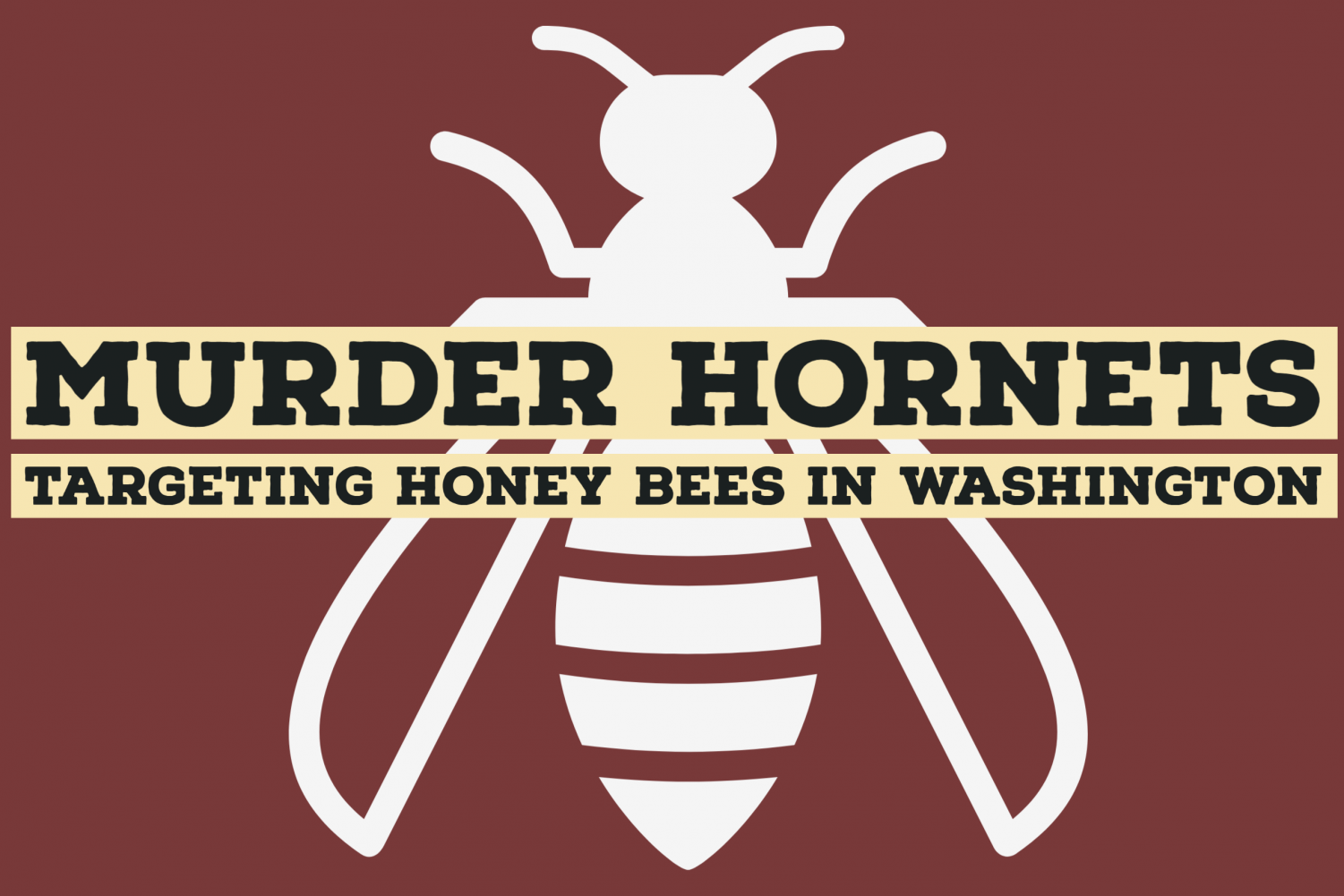Murder Hornets?!
June 24, 2025
On Oct. 22, the forests of Blaine, Wash., became a hub for local entomologists, scientists whose area of study involves insects, as the trees around them buzzed with a new, unprecedented life that came in the form of a hornet’s nest.
Washington is no stranger to invasive species — from the Himalayan Blackberry, a behemoth of a rose bush that uses its strong thickets to trample over native flora; to the Gypsy Moth, an insect whose lack of predators allows it to breed rapidly and consume trees and plants just as fast. And as of December 2019, Washington now homes the Asian-Giant Hornet, aptly nicknamed the “Murder Hornet.”
This invasive insect originates from Japan and its surrounding countries in East Asia. Much like their other relatives in the Vespidae family, they’re somewhat easy to spot. With their large frame being over 2 inches long and brightly colored orange and black bodies with long stingers; these ones, however, deliver a potent venom to anyone on the receiving end.
Justin Schmidt, an entomologist at the Southwestern Biological Institute and University of Arizona, states that an Asian-Giant Hornet’s sting is equivalent to three to 10 yellow jacket stings at once. However, Schmidt adds that despite the intensity of their sting, Japan’s death toll reveals that these hornets are responsible for less than 50 deaths a year, including those with allergies.
Murder Hornets earn their title because their main targets are the honeybees. These hornets form organized, raiding parties and with just a few small fleets are able to wipe out an entire hive.
Naturally, this causes problems for the ecosystem as humans depend on bees for pollination, something that researcher James Crall emphasizes in an interview with The Harvard Gazette. “Bees are incredibly important for human well-being, including both managed honeybees and wild bees,” Crall said.
“Put simply: About one in three bites of food comes from crops that depend on animals for pollination, and bees are the most important group of pollinators. Losing pollinators means less healthy food and worse health outcomes for humans. Of course, beyond their role in food production, bees are incredibly important for preserving biodiversity, more generally.”
Nina Pullano, a writer for Inverse, goes on to state what makes these hornets dangerous. “Their greatest threat to humans is not their sting. Instead, it’s their proclivity for killing other insects — insects that we very much need to keep alive because of their effects on the ecosystem and agriculture.”
Bees are valuable pollinators and by extinguishing them humans and animals lose food sources, emptying out a very important niche within the ecosystem. The deaths of the bees also has an effect on their other native predators who are now cut short on their food source, making these hornets a much bigger threat to the wildlife rather than to humans and domesticated animals.
The threat level truly depends on whether or not the hornets continue to reproduce and survive in their new environments. “It will have a massive impact on the bees, who have been facing a rapid decline in the last 10 years, as well as human agriculture which largely depends on pollinator biodiversity.” Pullano stated.
The WSDA is encouraging people to report any sightings of the giant hornets to them and to refrain from taking any direct action of their own, as even typical beekeeping gear is not enough to protect you from their stingers. You can also help the ecosystem not just by looking for the hornets, but by looking out for other insects as well.
According to Eric Lee-Mäder, a co-director of the pollinator program at the Xerxes Society, peoples’ fear of the hornets is affecting other insects in the area. “Fear of these insects seems to be driving people to kill bees and wasps that aren’t Vespa mandarinia,” Lee-Mäder stated.
Invasive species can be a threat to any environment, especially when their targets are such pivotal members of the ecosystem and agriculture. Exterminating the hornets is a careful and time-consuming process and the best way Washingtonians can support our state’s ecosystem and the scientists protecting it is to remain calm, report any possible sightings to the proper people, and to avoid doing any further harm by killing unrelated wasps and bees.

